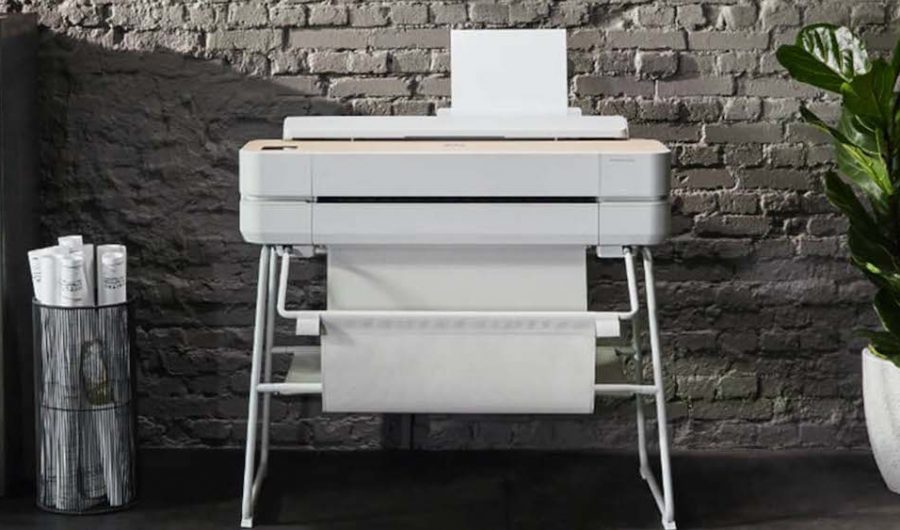

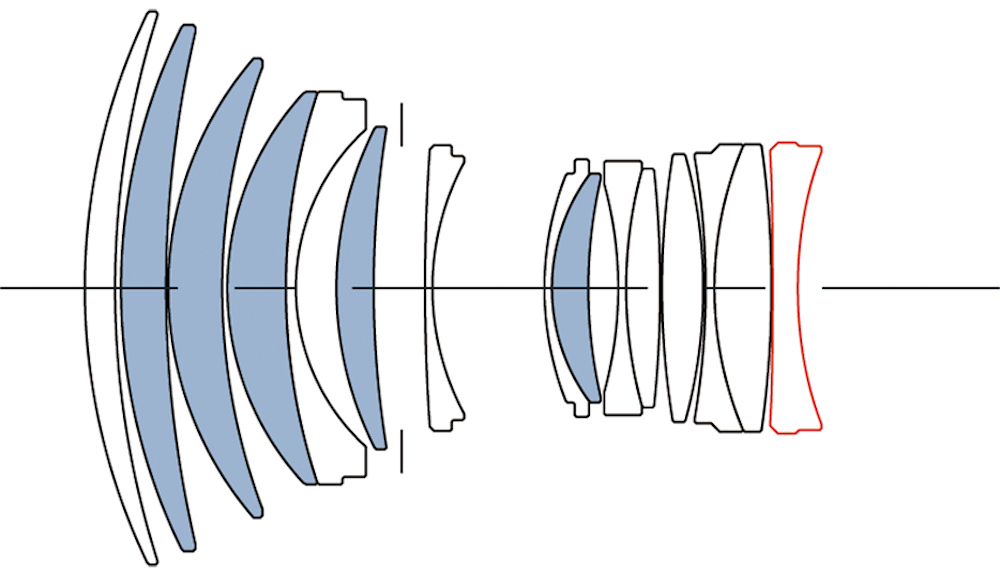
We’ve seen a lot of innovation in lenses lately, and I’m looking forward to more this coming year. The full-frame mirrorless mounts are really coming into their own, as Sony fills many of the last holes in their lineup while Canon and Nikon both build theirs. Sigma gets “lens innovator of the year” for 2020 for their new DG DN Art lenses for mirrorless mounts. Every one of the Art lenses that I’ve handled has been excellent, and the 85mm f1.4 is absolutely superb – I had the Sigma and the Zeiss Otus 85 here together, and the differences weren’t huge, especially given the differences in price and convenience. Previous Sigma Art lenses were superb, and at a reasonable price, but tended to be enormous. These new mirrorless-specific designs for E and L mounts so far (rumors state that Z and/or RF may be coming) are equally good, but tend to be relatively compact and easy lenses to use. Build quality is really superb, to the point that they feel as good as something like a Canon L or a Sony G-Master. I certainly expect more great Sigma glass in the next year – one hope is for some higher-end mirrorless-specific telephotos (although Sony has recently been doing that for themselves).
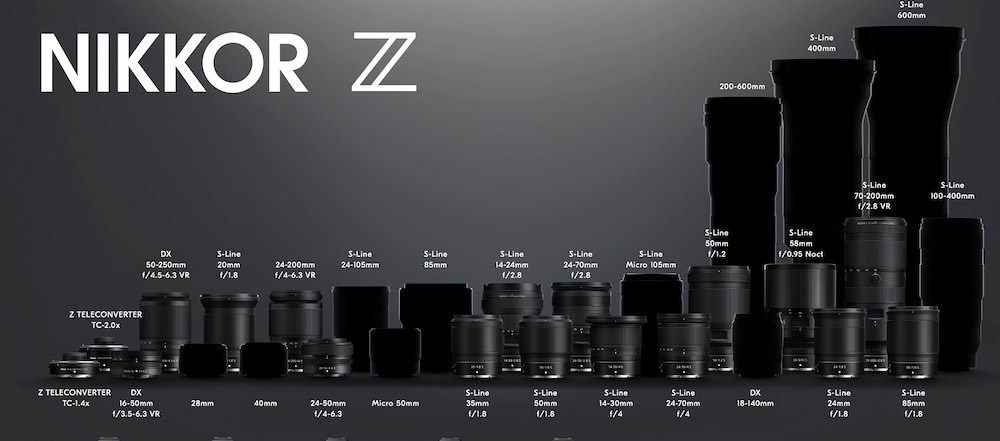
Nikon deserves recognition for how well thought out the Z mount lens rollouts have been. The compact bodies have gotten a good selection of very good (the 14-30mm f4) to superb (24-70mm f2.8, 50mm f1.8, probably others I haven’t used), relatively compact lenses. Some people have criticized Nikon for the relatively slow lenses – but faster glass would be a lot larger, and would tend to ruin the Z bodies’ size advantage over DSLRs. For those who prefer big, fast, complex lenses, Nikon hasn’t forgotten you. If a nearly 2.5-pound, 17 element 50mm f1.2 normal lens isn’t big, fast or complex enough for you, what is? Nikon now has a nearly complete Z mount lens lineup below 100mm – they could use a couple more really fast primes and maybe a fisheye or a macro or two. Where they need to go next is above 100mm, where they have no native primes and only two zooms, neither of which exceeds 200mm.
Their PF technology is a great fit for Z mount lenses that need to be compact. Since the two existing PF telephoto primes work so well on the FTZ adapter, the priority for native Z mount versions should be different focal lengths. How about a 400mm f4.5 or f5? How about a 600mm f6.3? I’m not sure whether PF zooms are a real possibility? Canon used similar technology in a 70-300mm DO zoom some years ago, but I am not enough of a lens design expert to know how similar Nikon’s technology is. If they can make PF zooms, what about a 70-300mm or 100-300mm f4-5.6 roughly the size of the 24-70mm f4? How about a 100-400mm the size of a conventional 70-300mm? These are both similar size reductions to what Nikon achieved with the 300 and 500mm PF lenses. At least in my ranking of priorities, Z mount versions of the big, fast telephotos can wait until their next scheduled revision – those lenses work just fine on the FTZ adapter, and they tend to outlast bodies, so people won’t be in a hurry to replace such expensive lenses to get rid of an adapter.
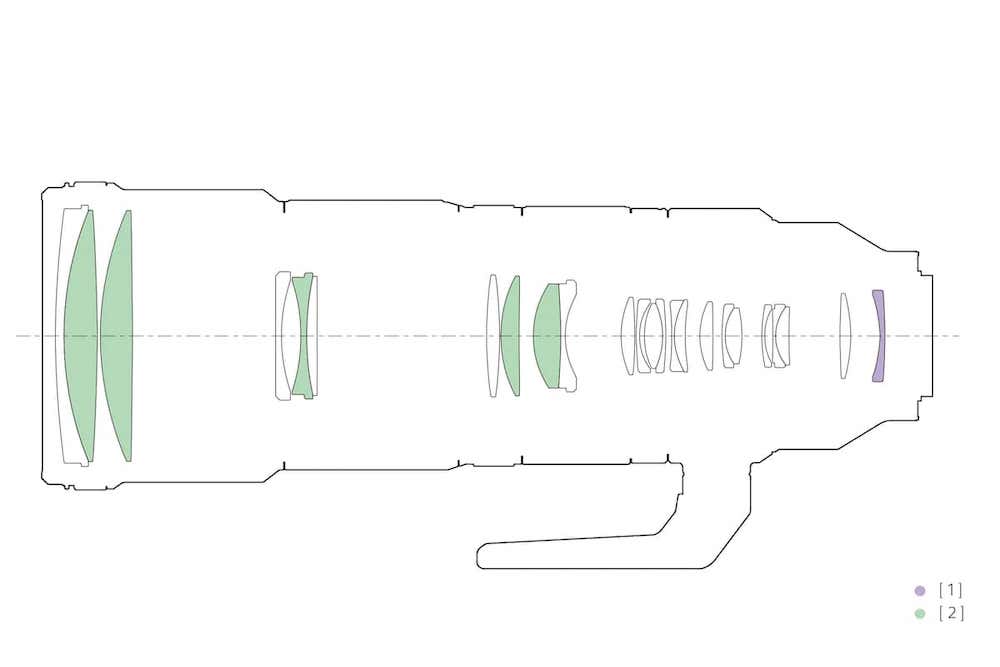
Diagram of the Sony 200-600mm f5.6-6.3 – it’s surprisingly complex for a mid-priced telephoto zoom, with a lot of ED elements (in green)
My favorite Sony lens of 2020 is also my favorite lens of 2020, period. It’s the 200-600mm f5.6-6.3, which was a wonderfully fun lens to have in for review (my recent wildlife photography piece has much more on this lens). It wasn’t very long ago that a very high-quality, internal-focusing, internal-zooming lens that reached 600mm at a somewhat reasonable aperture would have been a $5000 optic.
This one’s $2000, it’s got 5 ED elements plus an aspheric (out of a total of 24 elements in 17 groups!) and an 11-bladed aperture – it’s a highly sophisticated design quite similar to $12,000 200-400mm f4 lenses. It’s very sharp, including at 600mm, and it separates subject from background nicely at the long end (not as well at 200mm and f5.6, but why would you use a 5 lb lens at 200mm – there are plenty of lighter, faster options). It offers big-lens wildlife photography without the big-lens price. It’s still an expensive lens, but it’s a reasonable one for a serious photographer who photographs wildlife, but not exclusively to own. We sorely needed really long lenses (over 400mm) in between the sub-$1000 class of trombone zooms that are weak at the longer end and the over $5000 exotics. Sony delivered (as did Nikon a couple of years ago with the 500mm f5.6 PF). It’s not quite a $10,000 exotic telephoto, but it’s very, very close for a $2000 lens. I just bought one after reviewing it, in hopes of a lot of birding in 2021. The Sony G 200-600mm f5.6-6.3 gets my lens of the year award (it was technically released in 2019, but you couldn’t get one easily until 2020).

What I’d most like to see Sony do with their line in 2021 is refresh some of the very early FE lenses that are showing their age on the newer, high-resolution bodies. They now have a nearly complete lens lineup, with the few missing pieces mostly being real exotica (fisheyes, tilt/shift lenses). The popular 300mm f2.8 is, inexplicably, also missing – and that would be a great lens to introduce. Perhaps the most glaring case of very old lenses is in the worst possible place – two of Sony’s oldest and weakest FE lenses are the 28-70mm f3.5-5.6 and the “Zeiss” 24-70mm f4. What percentage of photos, especially with light mirrorless bodies that beg to get out, are taken with a standard-range zoom? If they’re serious about the A7C, they’ll also need more tiny lenses to go with it.
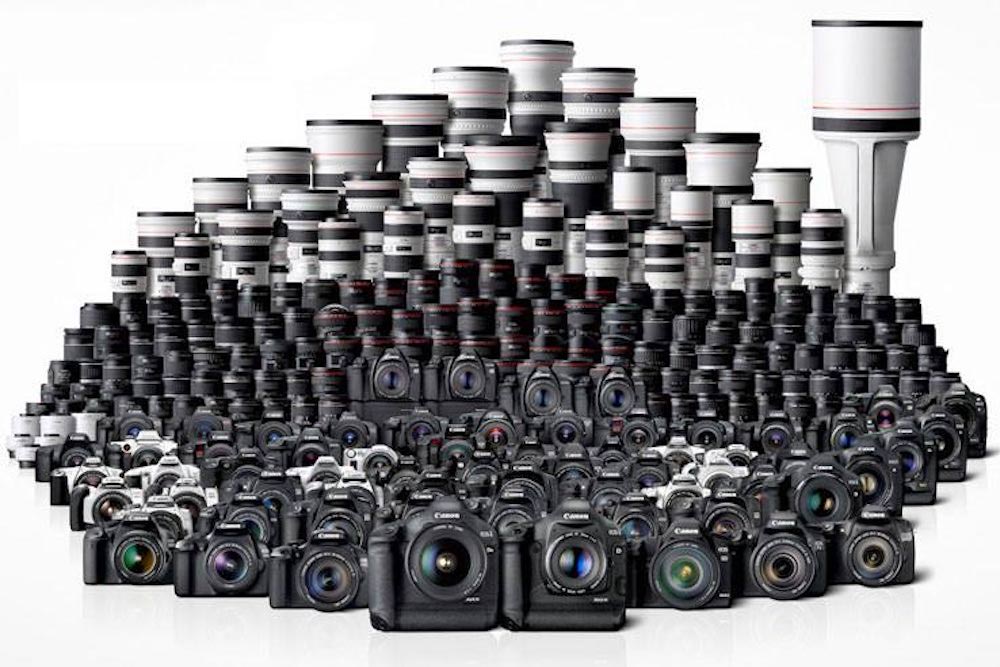
I have far less experience with recent Canon lenses than with anything else, since I have never used an RF body outside of a store or a show – I very seriously hope to come up with a sample in 2021. From looking at their lineup, they have really innovated in a couple of areas, pushing the boundaries of lens design. Unlike Nikon, who started with a lineup of f1.8 primes, then added the first of the f1.2 lenses recently, Canon started with very complex primes and is now beginning to add some smaller and lighter lenses. Disappointingly, their recently released 50mm f1.8 is not a modern “super 50” like the 50mm f1.8 Z mount Nikkor. It is a 6 element asymmetric double-gauss lens similar to DSLR lenses from the 1980s (and before – the first asymmetric double-gauss lens was designed in 1920). It’s a $200 lens, and it’s absolutely tiny, but I can’t see it keeping up with modern sensors – there’s a reason why modern 50mm lenses have 12 elements or so, and it’s not that lens designers have extra bits of glass lying around that they don’t know what to do with.
Another really innovative move by Canon is the two f11 oddities – 600mm and 800mm. They are the smallest, lightest and cheapest supertelephotos ever made (outside of a few mirror lenses and even slower Galilean telescopes turned into lenses). They are also diffraction limited wide open (they only way they can be used, lacking a diaphragm). They aren’t perfect lenses, but they’re a way into the world of long lenses for well under $1000 (and far more convenient than anything else as long). Canon has also added an extra 100mm to their 100-500mm zoom for the RF line – it’s the size of a 100-400mm, but adds a bit of additional reach – it’s slow at the long end, but it’s better to have the reach a little bit slow than not to have it at all. More innovation at the long end – between Nikon’s PF lenses, Sony’s 200-600mm, these Canons and the various Sigma and other lenses we’ve seen recently, telephotos have seen more new designs in the past couple of years than they have in a long time.
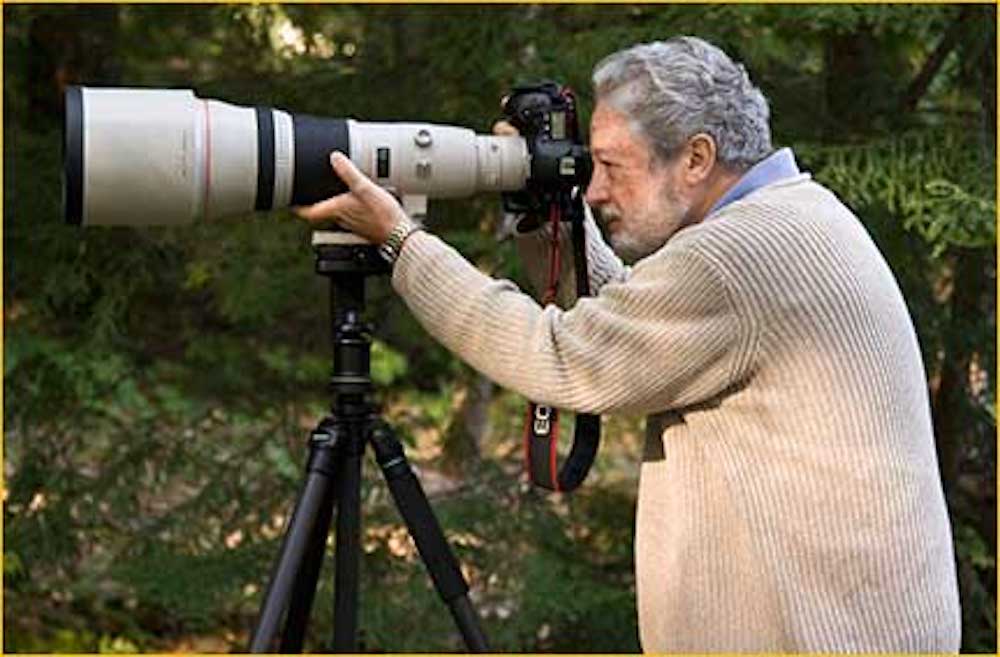
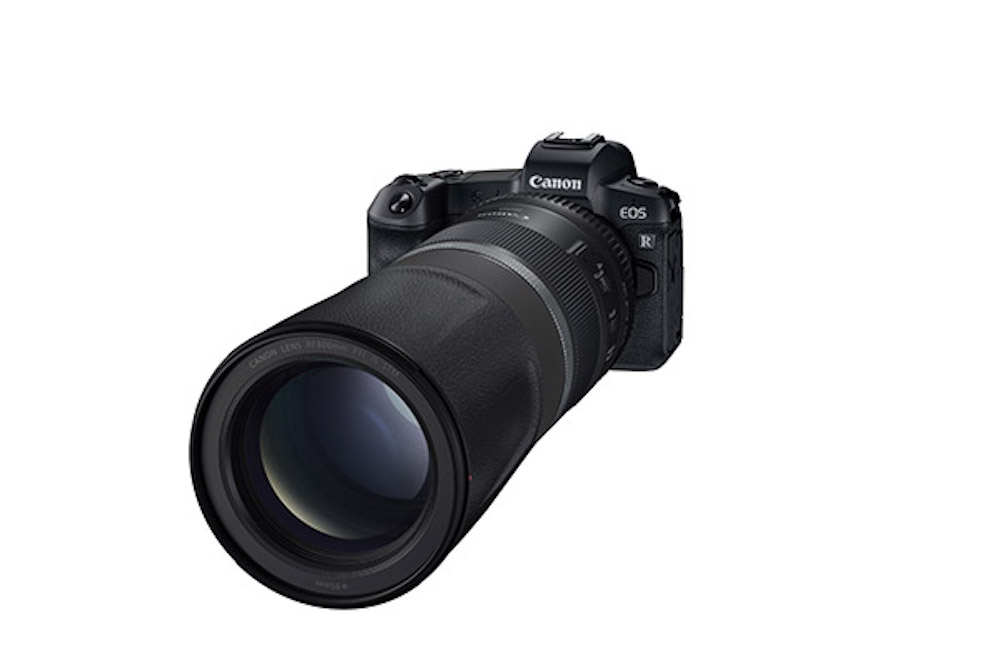
My big hope for Canon is that they keep filling in the gaps in mid-priced lenses, and that they work on their wide-angle range. How about a 50mm somewhere in between a $200 double-gauss and a $2300 lens? They have no RF prime wider than 35mm, and their only dedicated wide-angle zoom is a $2300 15-35mm lens (there are also the 24mm ends of a number of other zooms). Unlike every other manufacturer, Canon has worked on the long end of their range before the wide end. Since there have been a lot of RF lenses released recently, I have pretty good confidence that Canon is aware of these gaps and working on them.
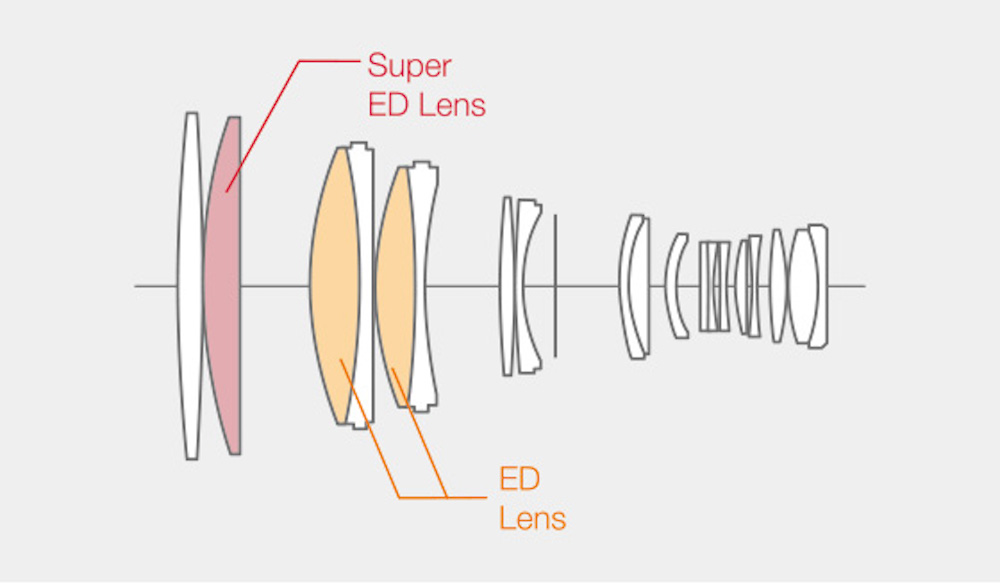
Fujifilm’s APS-C line has almost reached the point that Canon’s and Nikon’s DSLR lens lines reached long ago (and Sony mirrorless is almost there too – cough, 300mm f2.8…). All the expected lenses are there, plus most of the oddities. Any lens they make now will either be a replacement of an existing lens or something relatively exotic. In terms of added lenses, they are really at the point of adding things like fisheyes or tilt-shift lenses, since they have the basics covered. They could use more long lenses, and they’re adding a 70-300mm (remember that this is APS-C, the 55-200mm they’ve had for years covers the classic 70-300mm range, and their 100-400mm covers a 150-600mm range, so this lens is more like a 100-400mm).
What they could really use is another telephoto prime or two – their only prime over 90mm is a 200mm f2. With the APS-C crop factor, it acts like a 300mm f2.8, and it works very well with a 1.4x converter as a 280mm f2.8 (equivalent to a 420mm f4). With a 2x converter, it becomes a 400mm f4 (equivalent to a 600mm f5.6). That’s a very versatile lens, and exactly the right choice for a lone long prime. If they wanted to build a longer fast prime, it would either have to be a 300mm f2 (Nikon actually built a manual focus version long ago) or a 400mm f2.8 (not uncommon, but expensive). The 300mm f2 is the APS-C equivalent of a 400mm f2.8, and the 400mm f2.8 is the equivalent of a 600mm f4. Both offer useful focal length and aperture combinations with the two converters. Rather than an incredibly expensive exotic prime, another option would be a fast 135mm lens. A 135mm f1.4 would be equivalent to a 200mm f2, but it would be a big, expensive lens. A 135mm f1.8 would be a more reasonably sized and priced lens that behaved like a 200mm f2.4 or so.
Apart from a telephoto prime, Fujifilm should be revising old lenses and considering exotics (an APS-C fisheye would be great – save the tilt/shift lens for medium format). Their medium format line could use another lens in the short telephoto range – something like a 150mm or a 180mm. They have a well-spaced line up to 110mm (with the announced, but not yet introduced, 80mm), then a physically very large 120mm macro, then nothing until a 250mm. Something in the 150-180mm range that was neither superfast nor a macro (to keep the size reasonable) would fill a gap. The 110 is also relatively large, because it’s f2, and the 80 is going to be f1.7, so the longest compact lens is a 63mm. How about a 150mm f4?
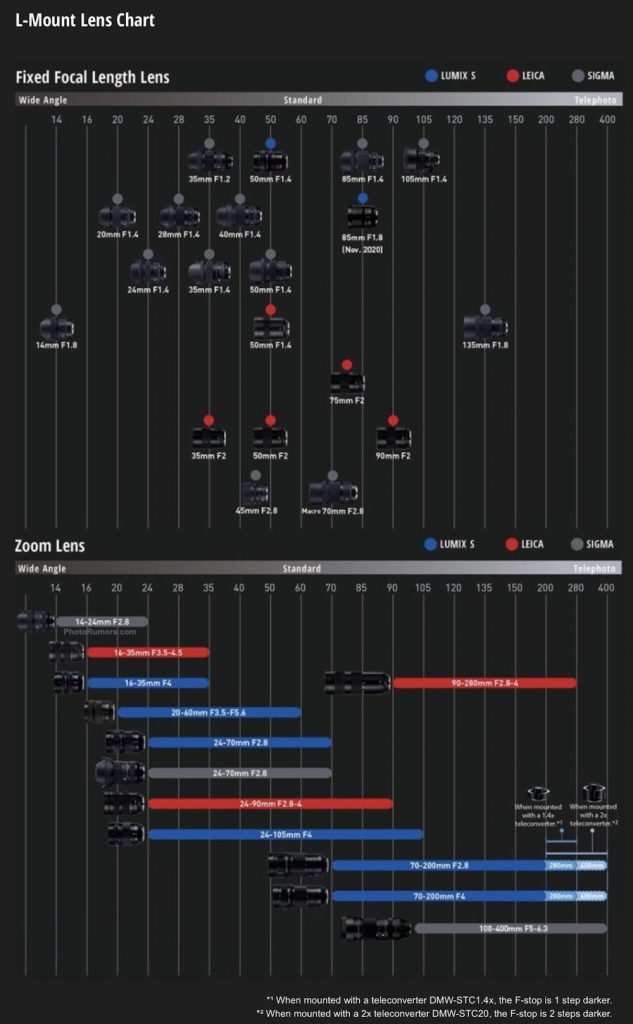
L-mount has a nice lens lineup, largely courtesy of Sigma. Panasonic is introducing more and more L-mount glass, but they don’t have another mount to keep it going – the Sigma lenses are shared with the very popular E mount, so they’re more likely to keep introducing glass with low body sales (it’s no problem for Sigma to make an L-mount version of an E mount lens, unless they put an element right up against the back of the lens). As long as they design with the L-mount flange distance in mind, putting in a 2mm spacer to work on E is trivial. Sigma is used to dealing with small variations in mount specifications – all of their DSLR lenses come in versions for various mounts, and the slight spacing variations are achieved through minor changes to the rear body. With DSLR lenses, they design to the restrictions of Nikon F, which has a long flange and a narrow throat, then they can account for wider or shorter mounts with spacing. For mirrorless, they need to account for the narrow throat of Sony E and the flange of L-mount, and they can space for anything else. That means that they cannot take advantage of the flexibility of, say, Z mount, which has a very short flange and a wide throat – but it does mean they can use essentially the same lens on any mirrorless mount.
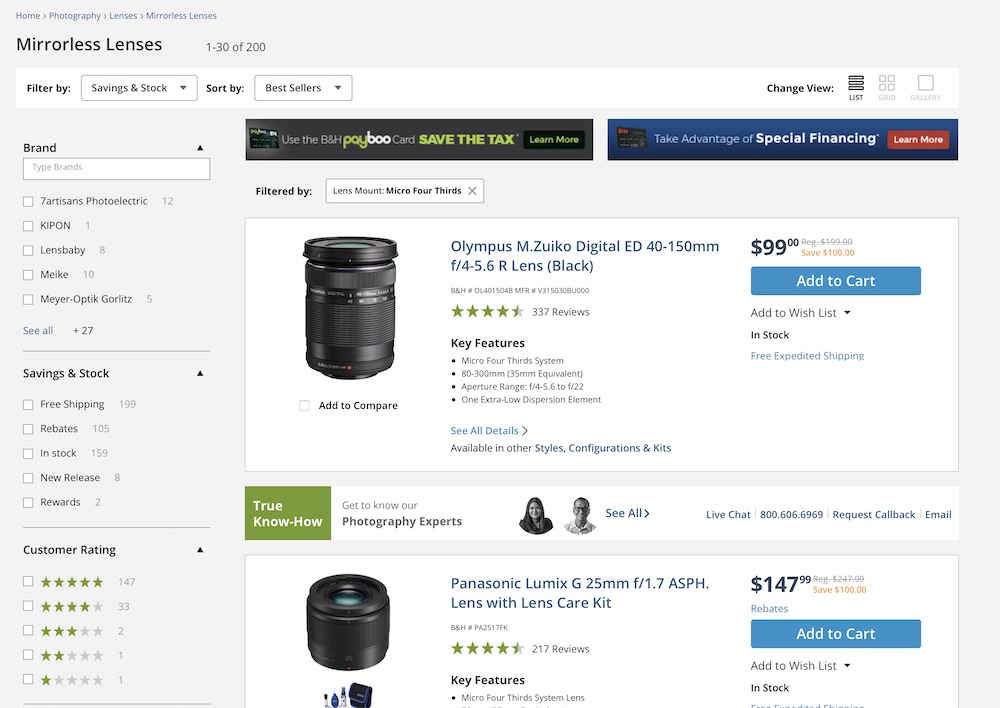
Micro 4/3 has a lot of lenses, although the equivalent apertures of most of them are rather slow. In addition to the AF lenses from Panasonic and Olympus/JIP, there is a wide selection of third-party lenses, mostly manual focus. I’m not optimistic about much in the way of new lenses, since Panasonic is focusing on L-mount and we don’t know what JIP is going to do. There really aren’t many gaps, at least not that can be filled by lenses that fit in the system. Sure, a 150mm f1.4 would be nice (it’s a 300mm f2.8 equivalent) – but how many people are going to buy that lens for a system that is at serious risk? If the slow sales mean that any more unusual lenses are going to have to be priced like the 150-400mm, who’ll buy any of them?
The $7499 150-400mm is a lot like the $2000 Sony 200-600mm in design (if you flip the built in 1.25x converter on the Olympus lens into the optical path, their specs become very, very close), but Sony can spread the development cost over whatever percentage of their large userbase is going to buy the lens, while JIP wants to make the cost back on a much smaller market. Maybe the Olympus uses slightly more exotic glass, but the difference isn’t nearly 4:1. Anything other than an inexpensive lens that will sell to a high percentage of body owners will face a small market and have to sell for a high premium, further shrinking the market. If we assume that a hypothetical 150mm f1.4 is about as complex and uses about as much glass as a 300mm f2.8 (telephotos, especially primes, tend not to have coverage issues, so the small sensor doesn’t make it simpler), a 300mm f2.8 is roughly a $5000-$6000 lens for a Canon or Nikon DSLR. If JIP needs a 3x premium to account for the smaller market on an exotic lens, a Micro 4/3 version would be $15,000 -$18,000. Even if we take Sigma’s much less expensive 100-300mm f2.8 zoom as a benchmark, it would still be a $10,000+ lens. This is exactly what happened to the beautiful Zuiko Super High Grade lenses for 4/3 SLRs – as the system started not to sell well, the better lenses became effectively hand built and had to sell for a huge premium, further depressing sales.
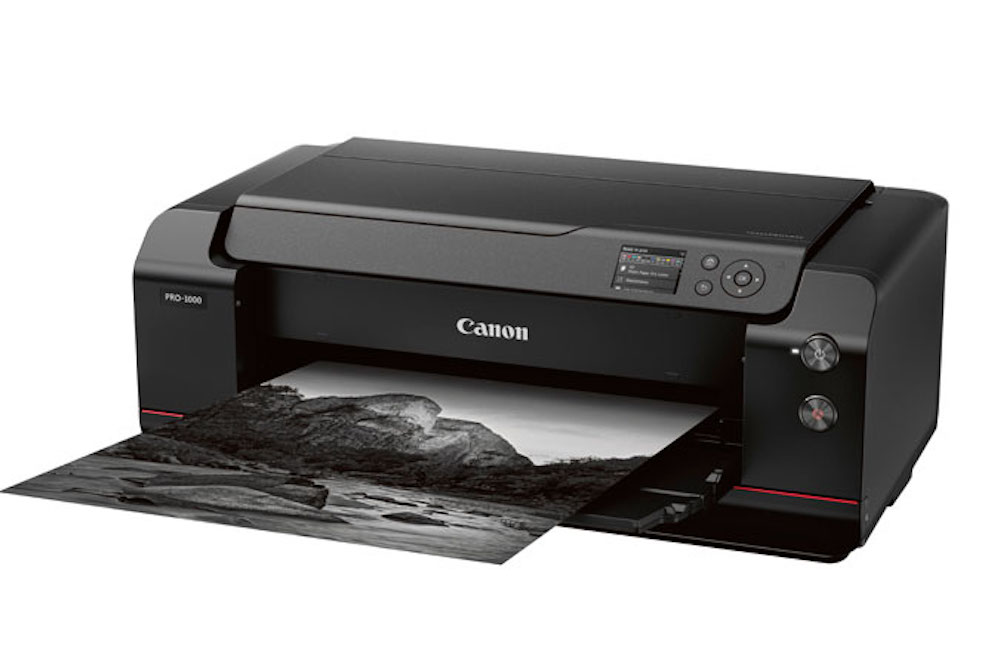
Moving on to printing, the biggest question for 2021 among conventional ink-jet printers is “what’s going to happen to the Canon Pro-1000 and the Epson P5000”? Everything else has been replaced relatively recently – the latest Epson 12-ink 24” and 44” roll fed printers (the P7500/9500, also known as the P7570/9570) are barely a year old, and the four-year-old Canon Pro 2000/4000/6000 series got a minor refresh at around the same time to the Pro 2100/4100/6100. The Epsons use a fully new inkset with a lot of promise, but there are no real reviews yet, while the Canons are a paper handling upgrade to an excellent line of printers (I’ve had a Canon Pro-2000 since 2017, which I’ve written about extensively here, and it’s been a great machine). I’d love to get my hands on a big Epson, or on an HP Z9, for a review.
Both Canon and Epson replaced their smaller 13” and 17” desktop printers this fall, improving the inksets, but being stingy with cartridges. Controversially, Canon kept their very small 14 ml cartridges in the Pro-200 and Pro-300 – by far the weakest feature of the previous Pro-10 and Pro-100. Epson actually shrank the cartridges in the 17” desktop P900, compared to its predecessor. The P800 had used 80ml cartridges, as had its predecessors the SP3800 and SP3880. The brand-new P900 is down to 50ml cartridges.
These printers use a cut-down version of the inkset from the big roll-fed printers, missing a couple of the “extra” colors the big printers use to increase gamut, although the manufacturers will occasionally put an improved ink or two in the desktop machines before it makes it to their big brothers. Most of them are 13” printers, although Epson makes a 17” model. Canon’s lower-end model (the Pro-200, replacing the Pro-100) is a dye-ink printer whose ink is unrelated to the models above it. Canon’s and Epson’s models don’t quite line up, although the 13” Canon Pro-300 is comparable to the 13” Epson P700. Canon has the dye-based Pro-200 below that, which competes most closely with Epson’s P400, while Epson has the P900 as a 17” version of the P700, which sits just below Canon’s full-inkset Pro-1000.
The only remaining printers that are several years old are the higher-end 17” models (assuming HP doesn’t bring out a desktop photo printer of note, which they haven’t had in years). Historically, these printers use the same inkset as the big roll-fed machines, although in different cartridges. The Epson P5000 (and its predecessors) has a powered roll feeder and a paper tray, an interesting combination for a lot of photographers. The Canon Pro-1000 is actually more comparable to Epson’s P900, although it uses the full inkset, because it doesn’t have a roll feeder.
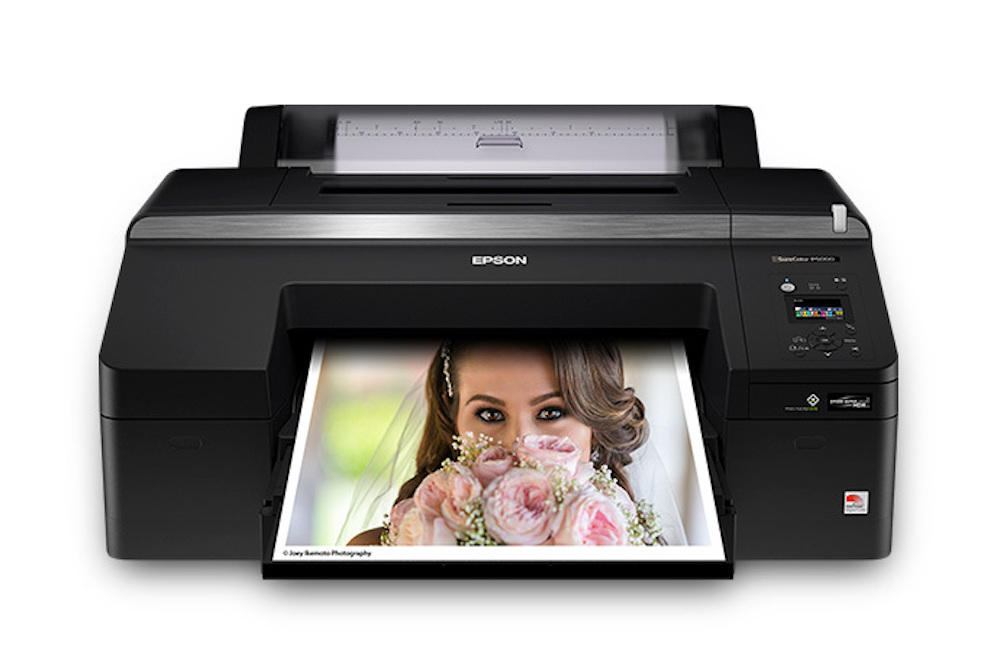
Epson has an easy upgrade path for the P5000 – simply put the new 12-ink inkset and the related head in it (if the extra cartridge will fit) and call it a P5500. Canon has a tougher choice – the new roll-fed printers didn’t get a new inkset, so any change to the inkset could mean going down to the more recent 10-color inks from the Pro-300 (making the Pro-1000 replacement essentially a 17” Pro-300, probably with bigger cartridges, and a straight competitor to the Epson P900). Alternatively they could introduce a new 12-color inkset that combines the full range of inks from the big machines with the new neutral inks from the Pro-300, actually putting the desktop printer ahead of the big roll-fed units. Canon’s remaining option for a Pro-1000 upgrade would be a new chassis that adds a roll feeder to the existing printer, moving it closer to the Epson P5000 class. Canon hasn’t had a roll-fed 17” printer since the iPF 5100, released in late 2007.
Even though the latest inksets are excellent, there is still room for improvement. Without having seen the output from the very latest Epson inks (which add a violet ink to the previous Epson set), Canon has an advantage in cool colors, and Epson in warmer tones. An inkset that combines the best features of the two is certainly a possibility – add an extra cool ink to Epson’s set, or one more warm ink to Canon’s. There have also been occasional printers that use four levels of neutral tones instead of three, to a slight, but noticeable advantage. Some dedicated monochrome inks (Jon Cone’s Piezography is the best known) use as many as six grays. Epson isn’t using a gloss optimizer, which both Canon and HP do – how good is the latest Epson ink on baryta paper without it? Without having seen the output, I’m not sure – I do find it useful on my Canon. Older Epsons had real problems with gloss differential, but the most recent models I’ve used are much better, and they claim further progress since I’ve used one.
An ideal fine-art photographic inkset would probably be somewhere around 14 or 15 inks – start with four neutrals (which take up five channels because of photo and matte black), add two cyan, two magenta and yellow for ten inks without any of the “extra” colors. Red (or orange), Green, Blue (or violet) plus gloss optimizer make 14. There may even be an argument for a deep red AND an orange (in which case they’d go with a deep blue rather than a violet) for 15. If an even number of channels is easier, a fifth neutral or a “warm black” would be the next addition. Every one of these inks is featured in a printer on the market today. Epson’s P20000 uses light gray, gray and dark gray plus photo/matte black for four neutrals, and the rest is a combination of Epson’s and Canon’s current top inksets. How close is the new 12-color Epson inkset to this ideal? Without having tested it or even read a serious review, I don’t know. My best guess is that it’s the best on the market today, unless the lack of a gloss optimizer is a problem on glossier papers.
The other problem I am hoping some maker of photographic printers solves is that our present printers aren’t really made for photographers – they are modifications of machines made for the graphic arts and sign printing industry. They are really too big for what we need as photographers, because they are built for speed and run all day, every day durability. Their cartridges are too big for most individual photographers’ needs – a 24” printer should have cartridges in the range of the smallest available for todays printers (120-160ml), while a 44” printer might want the capability to use ~300ml cartridges for a few heavily used colors and especially gloss optimizer. Even today’s 24” models accept 700ml cartridges, which are totally unnecessary unless you print an enormous amount. They are extremely fast, and getting faster – useful for a busy sign shop, who cares for an art print. There are postings in the LuLa forums suggesting that the new Epsons may even be TOO FAST for art printing – the ink isn’t getting a chance to dry. We don’t necessarily notice this, because the machines are remarkably cheap for what they are – but they are bulkier than they need to be, and Epsons in particular have historically not been happy with not printing every day – many photographers don’t print even close to every day.
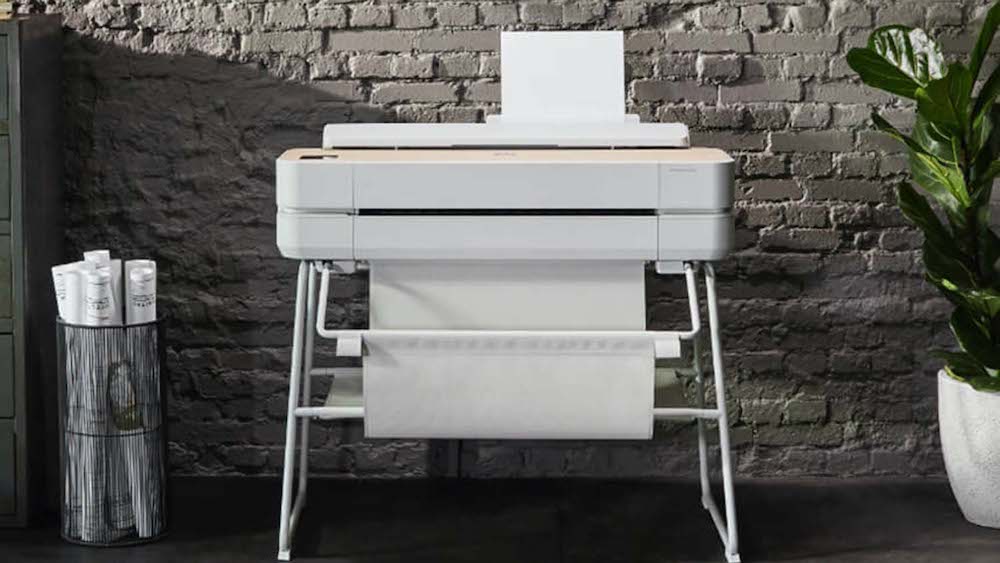
HP has often had some four and six color 24” printers under 60 lbs – they’re long, skinny things that take up almost no space against a wall. They even have a 36” model under 100 lbs. Epson has recently released similar machines – what if the photo printers were built on that type of chassis instead of the behemoth sign printer chassis? Many of these machines have economically replaceable heads, reducing clogging concerns. There is a question of whether the roll feeds would be strong enough to handle heavy photo papers and canvas, even at slow print speeds. Of course, a photo version would have to be a little bigger to accommodate more cartridges, but the earlier Canon and Epson roll-fed photo printers were much smaller than today’s 200-300 lb monsters – the top photo printers have more than doubled in mass and bulk since the early 2000s, especially the 24” models (the 44” models were built on heavier chassis). Will somebody take me up on this? Make a slow ~15 ink printer with 150 ml cartridges that snuggles right up against a wall or on a long, narrow counter for easier handling…
Some of the most exciting changes in the print world are coming beyond the realm of conventional inkjet printing. Both affordable dye-sublimation printing, which can be heat transferred onto almost any surface, and automatic cutting that makes prints of any shape possible, allow new, creative means of displaying photos. Combining the two allows even more creativity. These are both new skills to learn , and both have paths to mastery, but the possibilities are intriguing. At the low end and midrange of the market, customized greeting cards and business cards are much less of a pain with automatic cutting. T-shirts, mugs, mousepads and other items we used to have to send out can be produced in-house and either sold on Etsy, at art fairs and the like or used to promote your business. The advantage of producing such items yourself is not cost, but control and customization. I printed my holiday letters this year on custom stationery I made by running Moab Moenkopi Washi through the Canon with an image below the text, then cutting the pages on the auto-cutter. A bunch of work, but a unique and gorgeous result.
One case where quality is much better than sending the job out is that I have been producing 12-color greeting cards with extraordinary print quality on my big Canon printer, using the Graphtec automatic cutter. It took quite a bit of experimentation with cutter settings and paper choice to get a heavy baryta paper to cut reliably, but, now that I have it figured out, I can produce hundreds of cards in a day for about $1.25 in materials apiece. Since they are 12-color prints on very fine paper, they are a significant cut above anything a lab will do (which is generally 4-color, with 6-color occasionally available as an extra-cost option, and nearly always on either inexpensive matte or RC glossy paper). I’m still looking for the right way to market them (this batch are going as holiday gifts), but I suspect they’ll sell for $6.00 or so in a market where most photo cards go closer to $4.00. They are likely to be great items in the art fair/Etsy world, or to sell in local shops in places where there’s an interest in the landscape. They would also make wonderful promotional items, since the stunning print quality stands out. Nobody can possibly make money turning out business cards this way – online services are just too cheap to compete with – but a photographer with a setup CAN make their own, and the 12-color print will stand out at trade shows (if we ever get back to that world).

The cutter I’m using, a Graphtec FS6000, is a $1500 machine, and it’s still considerably more difficult to use than an inkjet printer (as I suspect dye-sub printing is) – but both cutting and dye-sub are on the way, and they will add great flexibility to printed output. Like inkjet printing in the early 2000s, expect to experiment quite a bit to get the settings right, and not everything is always documented as well as it should be. Once you have the settings for a particular paper, it’s a relatively smooth process, although some papers cut better than others (Red River Palo Duro Baryta produces a much cleaner cut than Canson Infinity Platine, something I found out after several hours of experimentation). ImagePrint drives the Graphtec natively with its “Cut-it-Out” option, and that is almost certainly the best way for most photographers who don’t have experience in a sign shop or similar business to use it. Without any additional work, ImagePrint will cut around the edges of a print, or it will cut a print to the shape of a template file. For more creative shapes, it will also follow any contour embedded in the print itself, which you can generate with Photoshop’s edge-tracing function. Birds in flight are easy to get Photoshop to trace, because they stand out from the background, while subjects that are closer to the background will need more manual cleanup. The Graphtec is capable of cutting surprisingly intricate details.
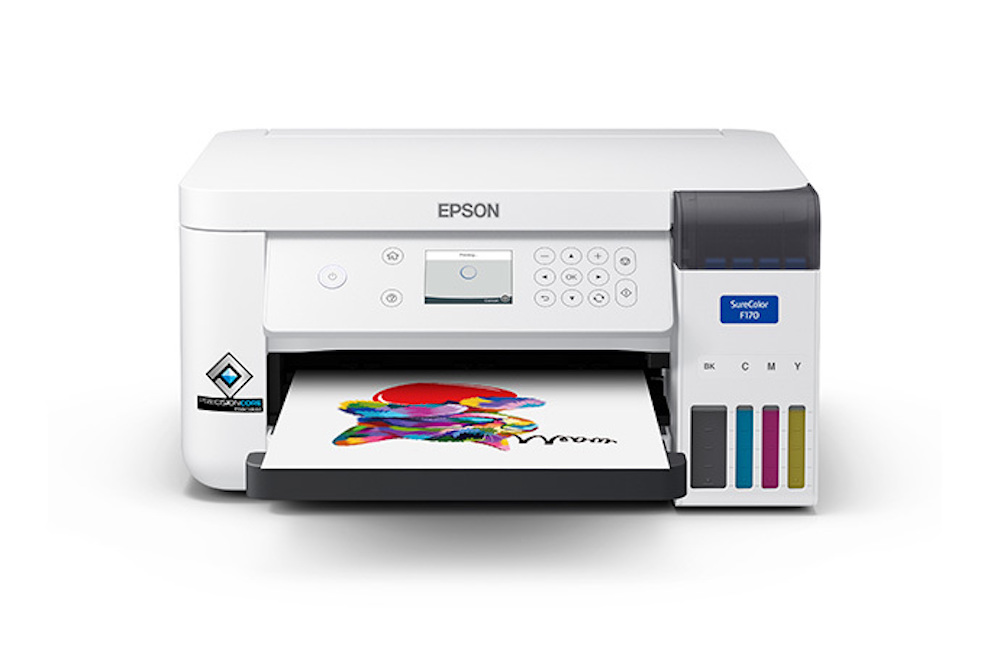
Before the end of 2019, dye-sublimation printers were unaffordable to most photographers at well over $5000, approaching $10,000, and were generally 44” or 60” wide (the portable dye-sub printers that sell for $100 or so use a somewhat different technology, and aren’t meant for transfer to various media). A dye-sub print on a t-shirt or a metal panel was something that was always sent out. Late in 2019, Epson released a $2500 “almost desktop” dye-sub printer, the F570. It is a 24” printer using one of the small, light chassis, and it is actually quite a bit smaller than the 24” inkjets we are used to. In the closing weeks of 2020, they followed it with the letter-size, true desktop dye-sub F170 that weighs 10 pounds and costs $399. Dye-sub transfer still requires a heat press, ranging from a few hundred dollars on up (and you might need a couple of them, one for flat items and cloth, plus a press that deals with mugs, hats and other curved items – this can sometimes be one press with a couple of attachments) – but photographers can now do their own printing on a variety of items, ranging far beyond the “print” as a 16×24” framed piece of wall art.
One use is highly customized items – if it’s easy to turn out a single item, any print you’re selling can show up on anything you can transfer to. The margins would have to work out (and I’m not sure if they do), but couple that with a good website and there are significant untapped art markets. Another possible use is prototyping. If you are interested in licensing images to appear on items that will be produced in quantity, in-house capability can show what it might look like, even if the longer runs will be sent out. I was recently approached by someone who wanted to license images for merchandise for a music festival, and in-house dye-sub items could help make that kind of sale. The margin there is in a few dollars (or less) each in royalties on thousands of items I don’t have to make…
Dye-sublimation printing will be a different challenge for photographers used to high-end inkjet. Most dye-sub printers, including the two new affordable Epsons, are four color machines, when photographers are used to printing on eight, ten and twelve color printers. The only exceptions are very expensive machines (well over $5000) and some third-party inks for Epson printers. If you want to print dye-sub beyond four colors as an individual photographer, you’re dealing with a lot of experimentation with home-refilled cartridges. Dye-sub as a process doesn’t have the gamut we’re used to on high-end inkjets, and then we lose more gamut to four-color printing. The flexibility of dye-sub will mean that it’s worth learning to deal with the trickiness of the process, at least for some photographers. I look forward to experimenting and reporting sometime this year.
Dan Wells
January 2021

Lorem ipsum dolor sit amet, consectetur adipiscing elit, sed do eiusmod tempor incididunt ut labore et dolore magna aliqua. Ut enim ad minim veniam, quis nostrud exercitation ullamco laboris nisi ut aliquip ex ea commodo consequat. Duis aute irure dolor in reprehenderit in voluptate velit esse cillum dolore eu fugiat nulla pariatur. Excepteur sint occaecat cupidatat non proident, sunt in culpa qui officia deserunt mollit anim id est laborum.
Lorem ipsum dolor sit amet, consectetur adipiscing elit, sed do eiusmod tempor incididunt ut labore et dolore magna aliqua. Ut enim ad minim veniam, quis nostrud exercitation ullamco laboris nisi ut aliquip ex ea commodo consequat. Duis aute irure dolor in reprehenderit in voluptate velit esse cillum dolore eu fugiat nulla pariatur. Excepteur sint occaecat cupidatat non proident, sunt in culpa qui officia deserunt mollit anim id est laborum.

Lorem ipsum dolor sit amet, consectetur adipiscing elit, sed do eiusmod tempor incididunt ut labore et dolore magna aliqua. Ut enim ad minim veniam, quis nostrud exercitation ullamco laboris nisi ut aliquip ex ea commodo consequat. Duis aute irure dolor in reprehenderit in voluptate velit esse cillum dolore eu fugiat nulla pariatur. Excepteur sint occaecat cupidatat non proident, sunt in culpa qui officia deserunt mollit anim id est laborum.
Lorem ipsum dolor sit amet, consectetur adipiscing elit, sed do eiusmod tempor incididunt ut labore et dolore magna aliqua. Ut enim ad minim veniam, quis nostrud exercitation ullamco laboris nisi ut aliquip ex ea commodo consequat. Duis aute irure dolor in reprehenderit in voluptate velit esse cillum dolore eu fugiat nulla pariatur. Excepteur sint occaecat cupidatat non proident, sunt in culpa qui officia deserunt mollit anim id est laborum.
Lorem ipsum dolor sit amet, consectetur adipiscing elit, sed do eiusmod tempor incididunt ut labore et dolore magna aliqua. Ut enim ad minim veniam, quis nostrud exercitation ullamco laboris nisi ut aliquip ex ea commodo consequat. Duis aute irure dolor in reprehenderit in voluptate velit esse cillum dolore eu fugiat nulla pariatur. Excepteur sint occaecat cupidatat non proident, sunt in culpa qui officia deserunt mollit anim id est laborum.

Lorem ipsum dolor sit amet, consectetur adipiscing elit, sed do eiusmod tempor incididunt ut labore et dolore magna aliqua. Ut enim ad minim veniam, quis nostrud exercitation ullamco laboris nisi ut aliquip ex ea commodo consequat. Duis aute irure dolor in reprehenderit in voluptate velit esse cillum dolore eu fugiat nulla pariatur. Excepteur sint occaecat cupidatat non proident, sunt in culpa qui officia deserunt mollit anim id est laborum.

Lorem ipsum dolor sit amet, consectetur adipiscing elit, sed do eiusmod tempor incididunt ut labore et dolore magna aliqua. Ut enim ad minim veniam, quis nostrud exercitation ullamco laboris nisi ut aliquip ex ea commodo consequat. Duis aute irure dolor in reprehenderit in voluptate velit esse cillum dolore eu fugiat nulla pariatur. Excepteur sint occaecat cupidatat non proident, sunt in culpa qui officia deserunt mollit anim id est laborum.
Lorem ipsum dolor sit amet, consectetur adipiscing elit, sed do eiusmod tempor incididunt ut labore et dolore magna aliqua. Ut enim ad minim veniam, quis nostrud exercitation ullamco laboris nisi ut aliquip ex ea commodo consequat. Duis aute irure dolor in reprehenderit in voluptate velit esse cillum dolore eu fugiat nulla pariatur. Excepteur sint occaecat cupidatat non proident, sunt in culpa qui officia deserunt mollit anim id est laborum.

Lorem ipsum dolor sit amet, consectetur adipiscing elit, sed do eiusmod tempor incididunt ut labore et dolore magna aliqua. Ut enim ad minim veniam, quis nostrud exercitation ullamco laboris nisi ut aliquip ex ea commodo consequat. Duis aute irure dolor in reprehenderit in voluptate velit esse cillum dolore eu fugiat nulla pariatur. Excepteur sint occaecat cupidatat non proident, sunt in culpa qui officia deserunt mollit anim id est laborum.
Lorem ipsum dolor sit amet, consectetur adipiscing elit, sed do eiusmod tempor incididunt ut labore et dolore magna aliqua. Ut enim ad minim veniam, quis nostrud exercitation ullamco laboris nisi ut aliquip ex ea commodo consequat. Duis aute irure dolor in reprehenderit in voluptate velit esse cillum dolore eu fugiat nulla pariatur. Excepteur sint occaecat cupidatat non proident, sunt in culpa qui officia deserunt mollit anim id est laborum.
Lorem ipsum dolor sit amet, consectetur adipiscing elit, sed do eiusmod tempor incididunt ut labore et dolore magna aliqua. Ut enim ad minim veniam, quis nostrud exercitation ullamco laboris nisi ut aliquip ex ea commodo consequat. Duis aute irure dolor in reprehenderit in voluptate velit esse cillum dolore eu fugiat nulla pariatur. Excepteur sint occaecat cupidatat non proident, sunt in culpa qui officia deserunt mollit anim id est laborum.

Lorem ipsum dolor sit amet, consectetur adipiscing elit, sed do eiusmod tempor incididunt ut labore et dolore magna aliqua. Ut enim ad minim veniam, quis nostrud exercitation ullamco laboris nisi ut aliquip ex ea commodo consequat. Duis aute irure dolor in reprehenderit in voluptate velit esse cillum dolore eu fugiat nulla pariatur. Excepteur sint occaecat cupidatat non proident, sunt in culpa qui officia deserunt mollit anim id est laborum.
Lorem ipsum dolor sit amet, consectetur adipiscing elit, sed do eiusmod tempor incididunt ut labore et dolore magna aliqua. Ut enim ad minim veniam, quis nostrud exercitation ullamco laboris nisi ut aliquip ex ea commodo consequat. Duis aute irure dolor in reprehenderit in voluptate velit esse cillum dolore eu fugiat nulla pariatur. Excepteur sint occaecat cupidatat non proident, sunt in culpa qui officia deserunt mollit anim id est laborum.
Lorem ipsum dolor sit amet, consectetur adipiscing elit, sed do eiusmod tempor incididunt ut labore et dolore magna aliqua. Ut enim ad minim veniam, quis nostrud exercitation ullamco laboris nisi ut aliquip ex ea commodo consequat. Duis aute irure dolor in reprehenderit in voluptate velit esse cillum dolore eu fugiat nulla pariatur. Excepteur sint occaecat cupidatat non proident, sunt in culpa qui officia deserunt mollit anim id est laborum.

Lorem ipsum dolor sit amet, consectetur adipiscing elit, sed do eiusmod tempor incididunt ut labore et dolore magna aliqua. Ut enim ad minim veniam, quis nostrud exercitation ullamco laboris nisi ut aliquip ex ea commodo consequat. Duis aute irure dolor in reprehenderit in voluptate velit esse cillum dolore eu fugiat nulla pariatur. Excepteur sint occaecat cupidatat non proident, sunt in culpa qui officia deserunt mollit anim id est laborum.
Lorem ipsum dolor sit amet, consectetur adipiscing elit, sed do eiusmod tempor incididunt ut labore et dolore magna aliqua. Ut enim ad minim veniam, quis nostrud exercitation ullamco laboris nisi ut aliquip ex ea commodo consequat. Duis aute irure dolor in reprehenderit in voluptate velit esse cillum dolore eu fugiat nulla pariatur. Excepteur sint occaecat cupidatat non proident, sunt in culpa qui officia deserunt mollit anim id est laborum.
Lorem ipsum dolor sit amet, consectetur adipiscing elit, sed do eiusmod tempor incididunt ut labore et dolore magna aliqua. Ut enim ad minim veniam, quis nostrud exercitation ullamco laboris nisi ut aliquip ex ea commodo consequat. Duis aute irure dolor in reprehenderit in voluptate velit esse cillum dolore eu fugiat nulla pariatur. Excepteur sint occaecat cupidatat non proident, sunt in culpa qui officia deserunt mollit anim id est laborum.
Lorem ipsum dolor sit amet, consectetur adipiscing elit, sed do eiusmod tempor incididunt ut labore et dolore magna aliqua. Ut enim ad minim veniam, quis nostrud exercitation ullamco laboris nisi ut aliquip ex ea commodo consequat. Duis aute irure dolor in reprehenderit in voluptate velit esse cillum dolore eu fugiat nulla pariatur. Excepteur sint occaecat cupidatat non proident, sunt in culpa qui officia deserunt mollit anim id est laborum.
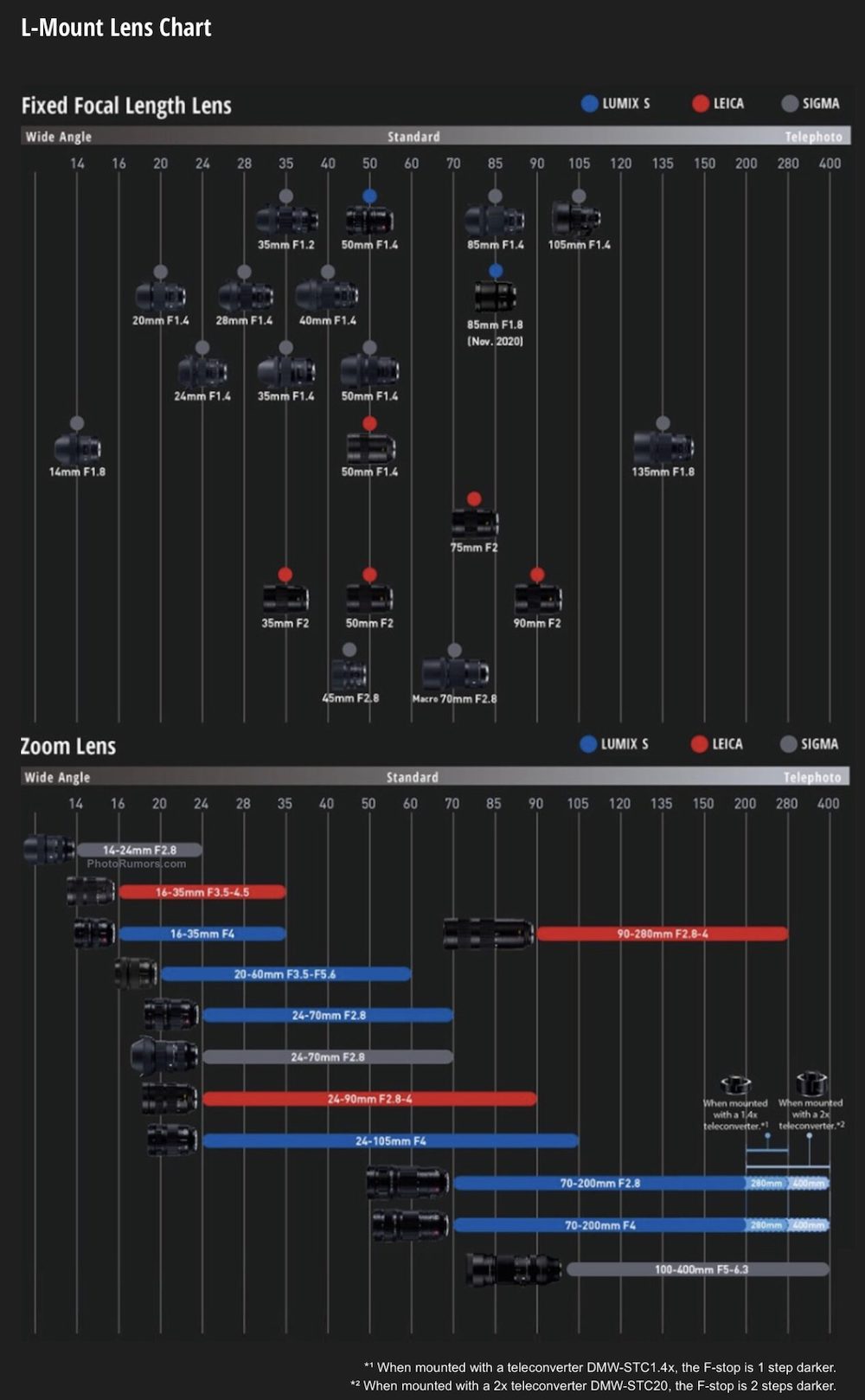
Lorem ipsum dolor sit amet, consectetur adipiscing elit, sed do eiusmod tempor incididunt ut labore et dolore magna aliqua. Ut enim ad minim veniam, quis nostrud exercitation ullamco laboris nisi ut aliquip ex ea commodo consequat. Duis aute irure dolor in reprehenderit in voluptate velit esse cillum dolore eu fugiat nulla pariatur. Excepteur sint occaecat cupidatat non proident, sunt in culpa qui officia deserunt mollit anim id est laborum.
Lorem ipsum dolor sit amet, consectetur adipiscing elit, sed do eiusmod tempor incididunt ut labore et dolore magna aliqua. Ut enim ad minim veniam, quis nostrud exercitation ullamco laboris nisi ut aliquip ex ea commodo consequat. Duis aute irure dolor in reprehenderit in voluptate velit esse cillum dolore eu fugiat nulla pariatur. Excepteur sint occaecat cupidatat non proident, sunt in culpa qui officia deserunt mollit anim id est laborum.
Lorem ipsum dolor sit amet, consectetur adipiscing elit, sed do eiusmod tempor incididunt ut labore et dolore magna aliqua. Ut enim ad minim veniam, quis nostrud exercitation ullamco laboris nisi ut aliquip ex ea commodo consequat. Duis aute irure dolor in reprehenderit in voluptate velit esse cillum dolore eu fugiat nulla pariatur. Excepteur sint occaecat cupidatat non proident, sunt in culpa qui officia deserunt mollit anim id est laborum.

Lorem ipsum dolor sit amet, consectetur adipiscing elit, sed do eiusmod tempor incididunt ut labore et dolore magna aliqua. Ut enim ad minim veniam, quis nostrud exercitation ullamco laboris nisi ut aliquip ex ea commodo consequat. Duis aute irure dolor in reprehenderit in voluptate velit esse cillum dolore eu fugiat nulla pariatur. Excepteur sint occaecat cupidatat non proident, sunt in culpa qui officia deserunt mollit anim id est laborum.
Lorem ipsum dolor sit amet, consectetur adipiscing elit, sed do eiusmod tempor incididunt ut labore et dolore magna aliqua. Ut enim ad minim veniam, quis nostrud exercitation ullamco laboris nisi ut aliquip ex ea commodo consequat. Duis aute irure dolor in reprehenderit in voluptate velit esse cillum dolore eu fugiat nulla pariatur. Excepteur sint occaecat cupidatat non proident, sunt in culpa qui officia deserunt mollit anim id est laborum.
Lorem ipsum dolor sit amet, consectetur adipiscing elit, sed do eiusmod tempor incididunt ut labore et dolore magna aliqua. Ut enim ad minim veniam, quis nostrud exercitation ullamco laboris nisi ut aliquip ex ea commodo consequat. Duis aute irure dolor in reprehenderit in voluptate velit esse cillum dolore eu fugiat nulla pariatur. Excepteur sint occaecat cupidatat non proident, sunt in culpa qui officia deserunt mollit anim id est laborum.
Lorem ipsum dolor sit amet, consectetur adipiscing elit, sed do eiusmod tempor incididunt ut labore et dolore magna aliqua. Ut enim ad minim veniam, quis nostrud exercitation ullamco laboris nisi ut aliquip ex ea commodo consequat. Duis aute irure dolor in reprehenderit in voluptate velit esse cillum dolore eu fugiat nulla pariatur. Excepteur sint occaecat cupidatat non proident, sunt in culpa qui officia deserunt mollit anim id est laborum.

Lorem ipsum dolor sit amet, consectetur adipiscing elit, sed do eiusmod tempor incididunt ut labore et dolore magna aliqua. Ut enim ad minim veniam, quis nostrud exercitation ullamco laboris nisi ut aliquip ex ea commodo consequat. Duis aute irure dolor in reprehenderit in voluptate velit esse cillum dolore eu fugiat nulla pariatur. Excepteur sint occaecat cupidatat non proident, sunt in culpa qui officia deserunt mollit anim id est laborum.
Lorem ipsum dolor sit amet, consectetur adipiscing elit, sed do eiusmod tempor incididunt ut labore et dolore magna aliqua. Ut enim ad minim veniam, quis nostrud exercitation ullamco laboris nisi ut aliquip ex ea commodo consequat. Duis aute irure dolor in reprehenderit in voluptate velit esse cillum dolore eu fugiat nulla pariatur. Excepteur sint occaecat cupidatat non proident, sunt in culpa qui officia deserunt mollit anim id est laborum.
Lorem ipsum dolor sit amet, consectetur adipiscing elit, sed do eiusmod tempor incididunt ut labore et dolore magna aliqua. Ut enim ad minim veniam, quis nostrud exercitation ullamco laboris nisi ut aliquip ex ea commodo consequat. Duis aute irure dolor in reprehenderit in voluptate velit esse cillum dolore eu fugiat nulla pariatur. Excepteur sint occaecat cupidatat non proident, sunt in culpa qui officia deserunt mollit anim id est laborum.
Lorem ipsum dolor sit amet, consectetur adipiscing elit, sed do eiusmod tempor incididunt ut labore et dolore magna aliqua. Ut enim ad minim veniam, quis nostrud exercitation ullamco laboris nisi ut aliquip ex ea commodo consequat. Duis aute irure dolor in reprehenderit in voluptate velit esse cillum dolore eu fugiat nulla pariatur. Excepteur sint occaecat cupidatat non proident, sunt in culpa qui officia deserunt mollit anim id est laborum.

Lorem ipsum dolor sit amet, consectetur adipiscing elit, sed do eiusmod tempor incididunt ut labore et dolore magna aliqua. Ut enim ad minim veniam, quis nostrud exercitation ullamco laboris nisi ut aliquip ex ea commodo consequat. Duis aute irure dolor in reprehenderit in voluptate velit esse cillum dolore eu fugiat nulla pariatur. Excepteur sint occaecat cupidatat non proident, sunt in culpa qui officia deserunt mollit anim id est laborum.

Lorem ipsum dolor sit amet, consectetur adipiscing elit, sed do eiusmod tempor incididunt ut labore et dolore magna aliqua. Ut enim ad minim veniam, quis nostrud exercitation ullamco laboris nisi ut aliquip ex ea commodo consequat. Duis aute irure dolor in reprehenderit in voluptate velit esse cillum dolore eu fugiat nulla pariatur. Excepteur sint occaecat cupidatat non proident, sunt in culpa qui officia deserunt mollit anim id est laborum.
Lorem ipsum dolor sit amet, consectetur adipiscing elit, sed do eiusmod tempor incididunt ut labore et dolore magna aliqua. Ut enim ad minim veniam, quis nostrud exercitation ullamco laboris nisi ut aliquip ex ea commodo consequat. Duis aute irure dolor in reprehenderit in voluptate velit esse cillum dolore eu fugiat nulla pariatur. Excepteur sint occaecat cupidatat non proident, sunt in culpa qui officia deserunt mollit anim id est laborum.

Lorem ipsum dolor sit amet, consectetur adipiscing elit, sed do eiusmod tempor incididunt ut labore et dolore magna aliqua. Ut enim ad minim veniam, quis nostrud exercitation ullamco laboris nisi ut aliquip ex ea commodo consequat. Duis aute irure dolor in reprehenderit in voluptate velit esse cillum dolore eu fugiat nulla pariatur. Excepteur sint occaecat cupidatat non proident, sunt in culpa qui officia deserunt mollit anim id est laborum.
Lorem ipsum dolor sit amet, consectetur adipiscing elit, sed do eiusmod tempor incididunt ut labore et dolore magna aliqua. Ut enim ad minim veniam, quis nostrud exercitation ullamco laboris nisi ut aliquip ex ea commodo consequat. Duis aute irure dolor in reprehenderit in voluptate velit esse cillum dolore eu fugiat nulla pariatur. Excepteur sint occaecat cupidatat non proident, sunt in culpa qui officia deserunt mollit anim id est laborum.

Lorem ipsum dolor sit amet, consectetur adipiscing elit, sed do eiusmod tempor incididunt ut labore et dolore magna aliqua. Ut enim ad minim veniam, quis nostrud exercitation ullamco laboris nisi ut aliquip ex ea commodo consequat. Duis aute irure dolor in reprehenderit in voluptate velit esse cillum dolore eu fugiat nulla pariatur. Excepteur sint occaecat cupidatat non proident, sunt in culpa qui officia deserunt mollit anim id est laborum.
Lorem ipsum dolor sit amet, consectetur adipiscing elit, sed do eiusmod tempor incididunt ut labore et dolore magna aliqua. Ut enim ad minim veniam, quis nostrud exercitation ullamco laboris nisi ut aliquip ex ea commodo consequat. Duis aute irure dolor in reprehenderit in voluptate velit esse cillum dolore eu fugiat nulla pariatur. Excepteur sint occaecat cupidatat non proident, sunt in culpa qui officia deserunt mollit anim id est laborum.

Lorem ipsum dolor sit amet, consectetur adipiscing elit, sed do eiusmod tempor incididunt ut labore et dolore magna aliqua. Ut enim ad minim veniam, quis nostrud exercitation ullamco laboris nisi ut aliquip ex ea commodo consequat. Duis aute irure dolor in reprehenderit in voluptate velit esse cillum dolore eu fugiat nulla pariatur. Excepteur sint occaecat cupidatat non proident, sunt in culpa qui officia deserunt mollit anim id est laborum.
You May Also Enjoy...
Focus on the Journey: “Sea of Fog Sunset” with Simon Schumacher
FacebookTweet Fellow photographers, this “Focus on the Journey” segment is for us. It’s a segment dedicated to sharing the deeper and personal stories behind a
Welcome to the LuLa Team: Jon ‘Swindy’ Swindall’s World Through a Lens
FacebookTweet Why Me? A Life Devoted to Capturing Beauty with Cameras Hey Luminous Landscape Community, Thank you for being a part of this community. I’m


